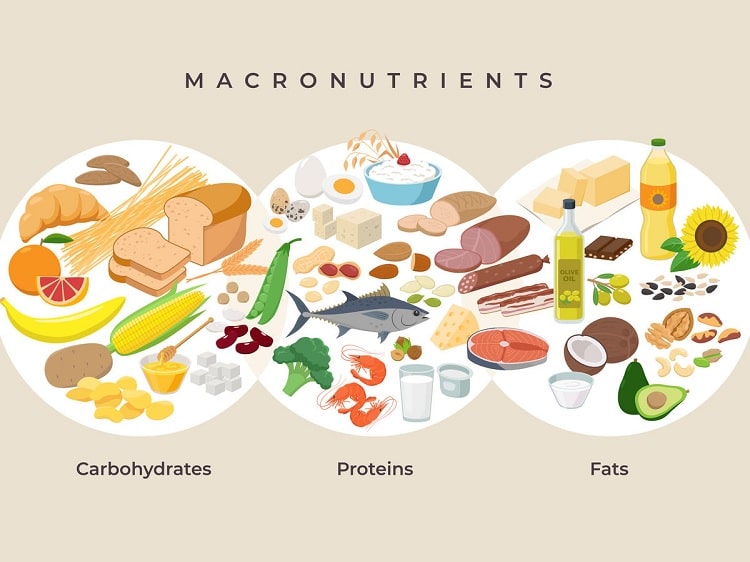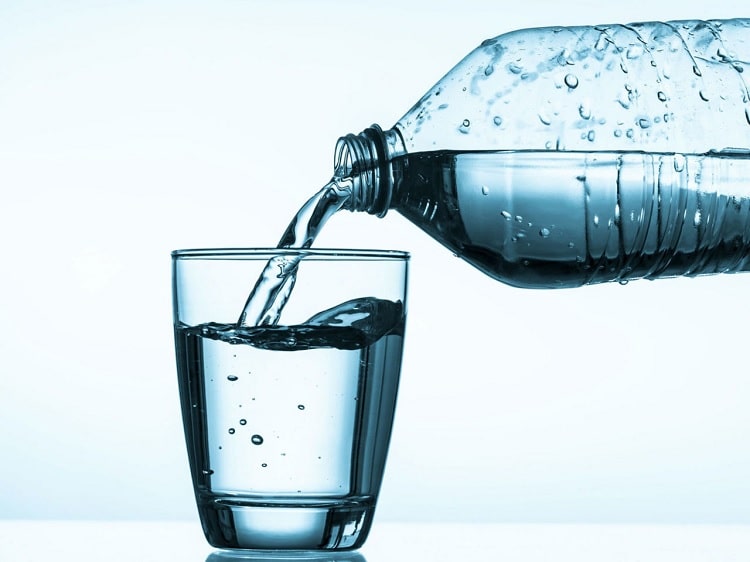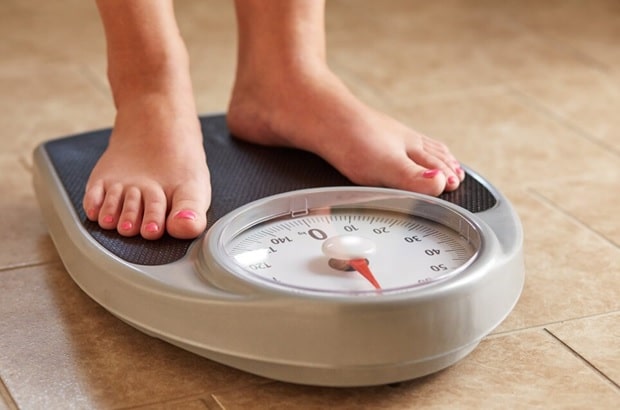The Best Macros for Weight Loss & How to Count Macros for Weight Loss Diet
Losing weight requires an optimal weight-loss strategy. What is the best macro split for cutting?en you plan your diet routine and exercise regimen well, you’ll be able to achieve your weight loss goals. It is essential to focus on your diet and make necessary changes in it to manage your diet.
Following a diet plan based on the nutritional value of each food can be challenging. You could feel more constrained in your food choices if you follow this kind of diet plan. This is where macros come to your aid.
Macros are necessary for every biological process. Monitoring your macronutrient intake has a number of positive health effects, including weight loss. When you count macros for weight loss, you can lose weight while having a variety of food options.
You need not stress about the calories you consume in a day. Instead, you can count macros every day to help with your weight loss goals. Including foods in your diet based on macros makes it a flexible diet and supports weight loss without the wastage of muscle. This article will aid you in finding the best macros for weight loss and tracking them to lose weight.

What Are Macros?
Macros, or macronutrients, are the compounds that consist of three key nutrients essential for body function:
- Protein
- Carbohydrate
- Fat
These three macronutrients provide you with energy, build and repair muscle, and keep you satiated. It would help if you consumed sufficient quantities of each of these macros to maintain health. All three of these macronutrients are present in some foods, whereas just two of them can be present in some other foods, with one macronutrient present at higher levels than the other. Counting macros helps you lose weight and reap the nutritional advantages of these macronutrients.

Protein
Protein is an essential nutrient for muscle building and muscle repair. It is an excellent source of amino acids, which are crucial for nutrient absorption and tissue repair. When your body lacks a sufficient level of protein, you are likely to have edema in parts of your body and fatty liver.
Protein deficiency leads to increased appetite, loss of muscle mass, and weakness and fatigue. These symptoms can stall your weight loss. Therefore, it is vital to include protein-rich foods in your diet in moderation.

Carbohydrates
You need carbs for energy, which helps with your intense training. When you consume carbs, your body absorbs them and converts them to blood glucose, which later gets stored in the liver and muscle as glycogen.
Your body utilizes this stored glycogen to fuel your various body parts during intense physical activity. A rapid drop in carbs can cause fluid loss, constipation, nausea, headaches, and brain fog. Managing your daily carb intake can help you lose weight in the long run.

Fat
Fatty acids, which are found in fat, are essential for the metabolism, operation, and responsiveness to hormonal signals of cells and tissues. A healthy, balanced diet requires a small number of fats. Fats also help the body absorb fat-soluble vitamins A, D, and E.
Your body utilizes fat for energy storage and the protection of your bones and organs. Unsaturated fats are good for weight loss as they make you feel satiated and prevent snacking on unhealthy foods.
The Ideal Macros for Weight Loss
Counting macros can help you lose weight by regulating your daily macro consumption. The ideal macro ratios for weight loss are listed below, along with the percentages that are suggested:
- Carbs: 50%
- Protein: 35%
- Fat: 15%
The optimum macro ratio for fat loss is 5:3.5:1.5 for carbohydrates, protein, and fat, according to McMaster University research. To lose weight, you should keep track of your daily calorie consumption. Macros also contain calories, making it easy for you to count calories by tracking macros.
The number of calories found in a gram of three key macronutrients is provided below:
- 1g of protein: 4 calories
- 1g of fat: 9 calories
- 1g of carbohydrate: 4 calories
Thus, you can keep track of your calories by following a diet based on macros and lose weight steadily.
How Are Macros for Weight Loss Different from Macros for Fat Loss?
People often follow stringent methods to lose weight only to gain them back later. Gaining back the lost weight can be frustrating because it makes them feel their efforts have gone in vain. This is why it is essential to understand the primary difference between fat loss and weight loss.
When you focus on losing fat, you can maintain your weight loss for the longer term. The reason for this is losing weight can also mean the following two things:
- Loss of water weight
- Loss of muscle mass
Water weight is what people lose when starting with any weight loss program. Losing water weight causes fluctuations in your weight by as much as one or two pounds a day. You are more likely to gain back the water weight you lost after consuming foods and fluids.
Losing weight can also lead to loss of muscle mass. When you lose muscle mass, your body’s ability to burn calories will reduce, thereby stalling your weight loss. But focusing on losing fat helps to maintain your weight loss and achieve your weight loss goals.
Tracking macros along with a healthy lifestyle can aid in losing weight while preserving lean muscle mass. It is also best to understand your body composition and activity level and focus on staying in a healthy calorie deficit for weight loss. You can count on your daily macro intake to lose body fat and sustain weight loss.
How to Track Macros for Fat Loss?
Tracking daily macro consumption can help you lose body fat and achieve desirable weight loss goals. Each person has a unique physical structure. Thus they will probably need a varied ratio of macronutrients to lose weight.
You can follow the steps below to track your macros efficiently and steadily lose weight:
Find your energy balance and daily calorie goal
As a first step, you need to determine your energy balance. Understanding how many calories you consume and how many calories you burn in a day will assist you in regulating your calories for weight loss. You can utilize the National Institute of Health‘s online calculator to determine the number of calories you need a day for fat loss.
The website gathers information about your weight, exercise level, target weight, and gender to determine how many calories you should consume daily to reach your weight loss goal within the allotted period.
Track your daily macros
As a next step, you should set your target calorie intake to achieve your weight loss goals. It is widely recommended to limit your calorie consumption to 10-15% below what your body burns a day. Then, you can plan the ratio of carb, protein, and fat intake to match that target calorie intake every day.
When you plan your daily macro intake, you should pay attention to your protein intake, which is essential for increased muscle strength and muscle growth.
The recommended macro ratio is 5:3.5:1.5 for carbohydrates, protein, and fat. The macronutrient ratio for women can be 40% carbohydrates, 30% protein, and 30% fat. Everyone has a diverse body composition, so you can design your macro ratio based on your activity level and what works best for you.
Besides these steps, you can also use apps like My Fitness Pal to keep track of your calorie intake.
What Is a Macro Diet and How to Use it for Weight Loss?
A macro diet is one that emphasizes eating particular amounts of proteins, fats, and carbohydrates to promote health. It would be best if you tracked macros to reap the health advantages of the macro diet. Aside from that, it would help if you stuck to a calorie range based on your macronutrient intake for the best outcomes. Macro breakdown happens in the body to carry out certain processes.
- Amino acids, which are produced when proteins are broken down, are crucial for maintaining and gaining muscle growth, boosting the immune system, and enhancing recovery.
- Sugars are produced when carbohydrates are broken down, giving us energy and supplying our brain and nervous system with fuel.
- Fatty acids, which are produced when fats are broken down, are crucial for cellular energy production, adipose tissue energy storage, hormone and lipid composition, and biological signaling pathways.
In a macro diet, you want to consume these three macronutrients in the right portions to lose weight. You can consume carbs so as to get 30 to 60% of your calories from them based on your goals. Taking 0.6 to 1.0 g of protein per pound of body weight can help you lose body fat while maintaining lean muscle mass. You can manage your fat intake so that you get 20 to 30% of your calories from it for body fat loss.
Although macronutrients are beneficial for weight loss, you should concentrate on the following two factors for the best results:
Optimal food choices
Including nutritious foods that contain the three macronutrients can promote weight loss. The table below provides you with some healthy food options for the primary macronutrients.
[table id=10 /]
Ideal portion sizes
You should practice portion control while consuming macros for weight loss. Even though macros are beneficial for your health, they need to be consumed in moderation to manage your weight. You can use tracking apps to get customized meal plans with recommended portion sizes.
It might be challenging to follow in the initial days, but controlling your portion sizes of macros can help you maintain your weight loss in the longer term.
Benefits of Macro Diet
A macro diet helps to improve the quality of your food choices. Despite the fact that a macro diet requires sticking to a specific calorie range, there is no food that is off-limits on this diet. A macro diet can be easy to follow with the help of tracking apps and websites. There are numerous possible benefits to following a macro diet. We shall delve into some of its health advantages.
Supports Weight Loss Goals
The three primary macronutrients, carbs, protein, and fat, have a more considerable impact on your weight. Consuming these macros has an effect on your calorie consumption. Protein is a macronutrient that boosts metabolic health and increases fat burning.
When you increase your protein intake, you can build and retain lean muscle mass, which has an impact on your weight. Studies show protein consumption stimulates thermogenesis, a metabolic process of burning calories through heat production.
Another macronutrient, carbohydrates, can actually support weight loss. When you include healthy carbs like fiber in your diet, you are likely to have a reduced appetite, which regulates daily calorie intake and supports weight loss.
Fat is a macronutrient that can help with weight loss when taken in moderation. Monounsaturated and polyunsaturated fats can slow down digestion, making you feel satiated and aiding in weight loss.
Regulates Blood Sugar Levels
Macros like protein and carbs can regulate your blood sugar levels. Eating protein-rich foods can help to stabilize your blood glucose levels by reducing the absorption of sugars in your food. Having control over your blood sugar levels can reduce the risk of diabetes and obesity.
Fiber is a carbohydrate that helps to lower glucose levels as it is not digested by your body. In particular, soluble fiber intake is linked to better glycemic control.
Improves Athletic Performance
Athletes track their macros to improve their performance. Macronutrients are the primary source of energy. Protein is a macro that helps build lean muscle and prevent muscle wastage. Eating protein-rich foods aids in improving athletic performance.
Carbohydrates and fats give energy for all physical exertion. When you manage your macros based on your goals, you can exercise more effectively during strenuous sessions.
Potential Downsides
Even though planning diets based on macros can provide you with some advantages, it has a few potential downsides. When tracking macros for food consumption, you might lack nutrient diversity. This is because counting macros can make you focus only on carbs, proteins, and fats, thus possibly making you overlook essential micronutrients.
It can be challenging to track your macros on a daily basis. Besides these, tracking macros can increase the risk of eating disorders in people. It is advisable to consult your healthcare professional before adopting the macro diet.
The Bottom Line
Tracking macros can help with losing body fat and support weight loss. You can utilize tracking apps and websites to manage your daily macro consumption. But it is best to consult your dietician for guidance as counting on macros can make some people develop an unhealthy relationship with food.
While planning your daily macro consumption, you can consider your activity level for better outcomes. It is best to include macros in your diet based on your body composition and weight loss goals.
Faqs
The macronutrient ratio for fat loss can vary based on a variety of factors, including age, gender, individual goals, and activity level. The best macro split for cutting would be 40% fat, 25% carbs, and 35% protein.
Even though all three macros, protein, carb, and fat, have an impact on your weight, you can focus on protein and fat for fat loss. Eating protein-rich foods can help you lose body weight while preserving lean muscle.
Protein is a macronutrient that boosts metabolism and builds muscle. When you consume foods with high levels of protein, your body can burn more calories per day.







